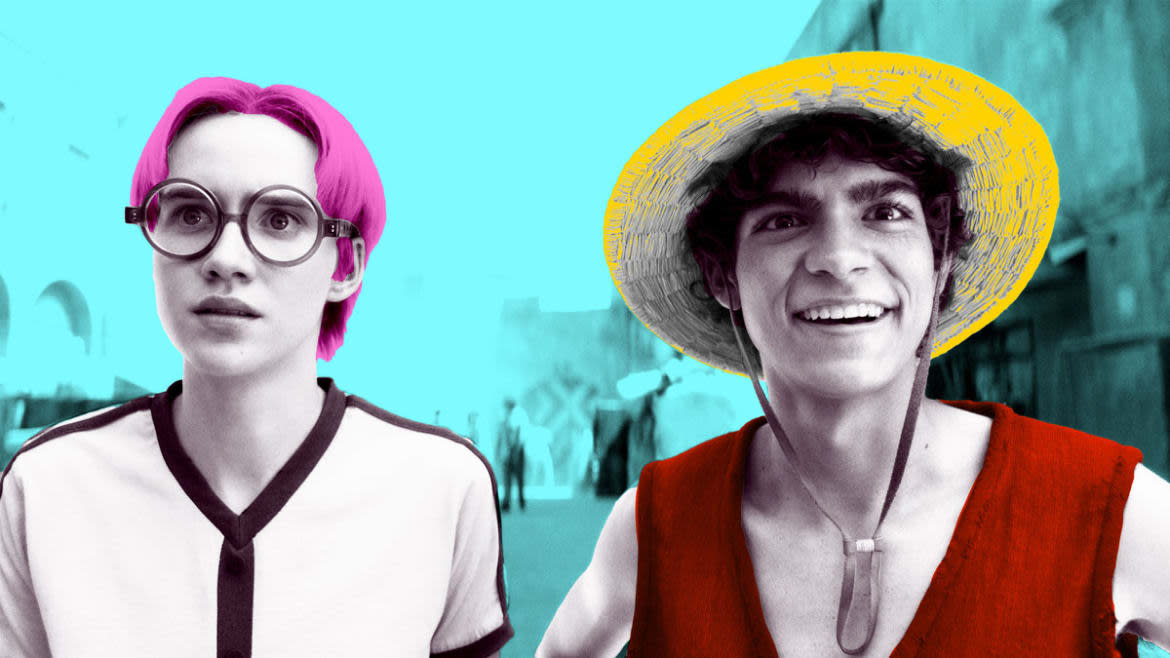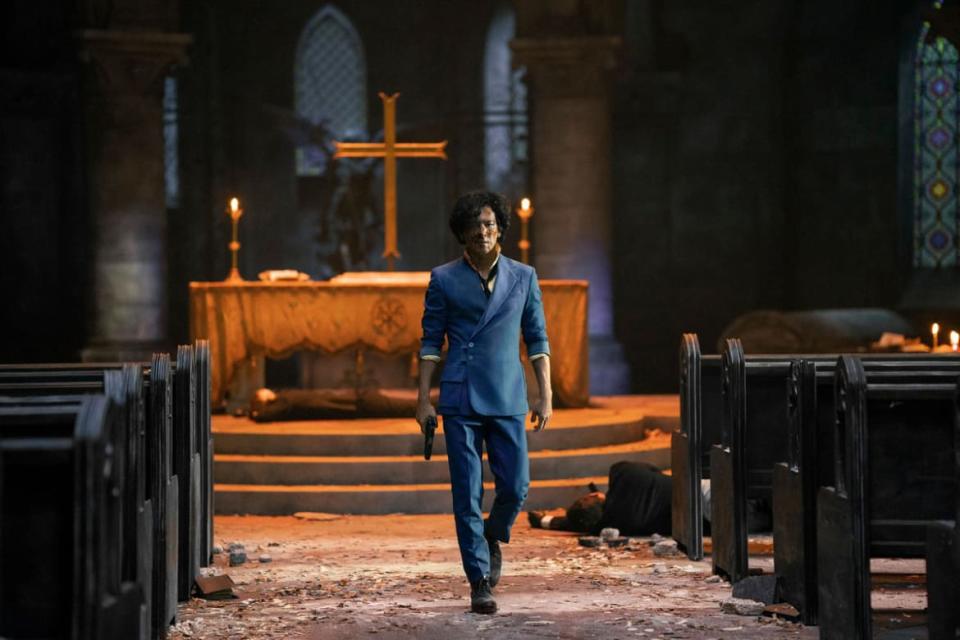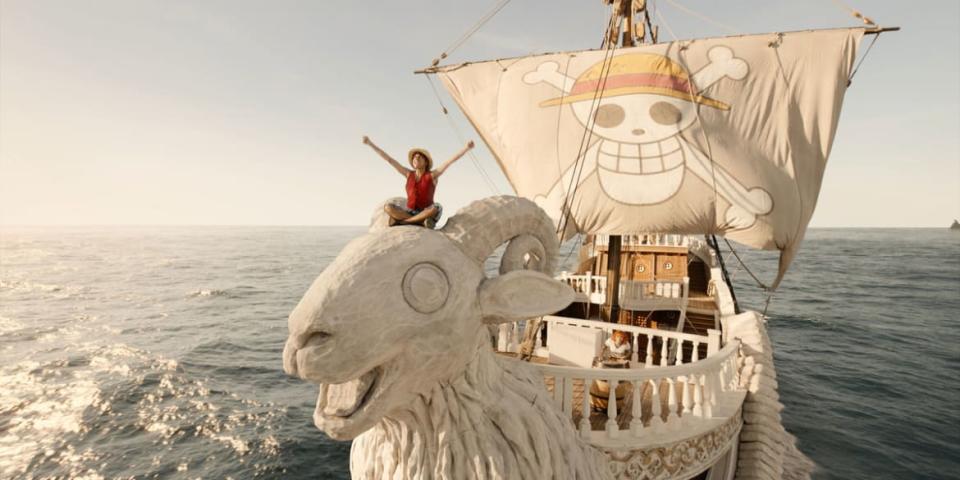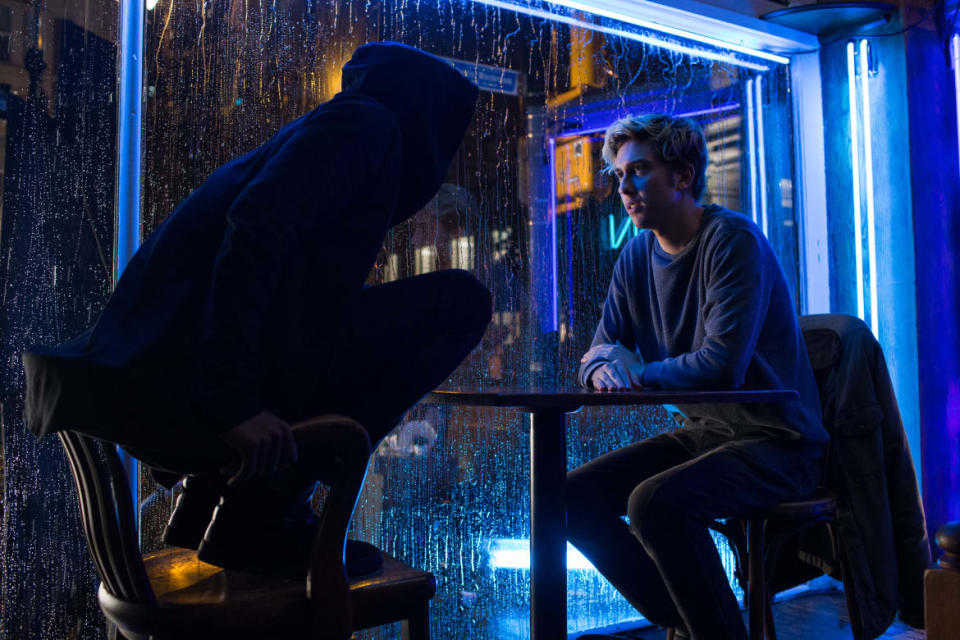The Four Lessons ‘One Piece’ Can Teach All Live-Action Anime

- Oops!Something went wrong.Please try again later.
- Oops!Something went wrong.Please try again later.
As film and TV studios continue to hunt for the next big intellectual property, their search has put a heightened focus on live-action anime and manga adaptations. But anime, much like video games, has mostly been doomed with poorly made live-action adaptations. It’s only recently that the tide has started to turn on the game adaptation front, with prestige programming like HBO’s The Last of Us or even Peacock’s Twisted Metal, which banks on an excellent cast, top-notch demolition derby stunt work, and a deep admiration for its source material that’s helped it become Peacock’s “most-binged” comedy premiere—whatever that means.
There have been gradual waves taking anime in the same direction. But American studios have produced live-action anime adaptations since the ’90s with little improvement, particularly with feature films. For every Speed Racer and Alita: Battle Angel, there’s Dragon Ball: Evolution and Ghost in the Shell.
Netflix is working hard to be the leading name in this field, and while its previous Western live-action anime productions—a film based on Death Note and a series-length reimagining of Cowboy Bebop—have failed, its latest is promising proof that a good Netflix reboot can be done. Netflix’s One Piece confidently sets sail with a bright horizon before it, while Death Note and Cowboy Bebop capsized before they could even get out their anchors, teaching some valuable lessons in how to do a live-action anime adaptation right.
‘One Piece’ Review: Netflix Scores Big With Its Thrilling Adaptation
Lesson #1: Don’t forget about the source material.
One Piece tells the extraordinary story of Monkey D. Luffy, a courageous young adventurer with aspirations to become the next Pirate King. Alongside his passionate Straw Hat Pirate crew, Luffy sails the Grand Line seas and takes on supernaturally-powered outlaws with his sights set on the cryptic One Piece treasure. Created by Eiichiro Oda, the One Piece manga made its debut in July 1997; the series has gone on to produce over 1,090 manga chapters, 1,075 anime episodes, and 15 feature films. One Piece's manga has sold more than 516 million copies across 61 countries; it’s the bestselling manga series of all time. Oda's singular vision for One Piece is the key element in its ongoing success, and his involvement in Netflix's One Piece is a major factor in why it triumphs where past adaptations have failed.
One of the biggest missteps with previous live-action anime adaptations—on Netflix or otherwise—is that the new creative teams take too much creative license. There’s surprising dissonance on this front and a temptation to put one’s own spin on a compelling premise can often overpower any faithfulness to the source material. Director Adam Wingard’s Death Note, a story about a high school student who finds a paranormal notebook that gives him the power to kill anyone simply by writing their name down, changes the motivations of its core characters. The film’s portrayal of antihero Light’s (Nat Wolff) intelligence, paranoia, and moral compass is counterintuitive, as is his relationship with Mia (Margaret Qualley), which becomes his driving force in the Netflix film. Superficial character traits like Light's sweet tooth remain, while more important backstory is tossed to the wayside. The film also only adapts a fraction of the story, leaving a disjointed product in its wake.
In the futuristic space opera Cowboy Bebop, a rag-tag team of bounty hunters travel the galaxy trying to make ends meet while they search for their next big score. Netflix’s version of Cowboy Bebop strays even further from its roots with equally jarring character transformations that turn classic leads Jet Black (Mustafa Shakir), Vicious (Alex Hassell), Julia (Elena Satine), and Gren (Mason Alexander Park) into broad action stereotypes instead of nuanced outsiders. The Red Dragon Syndicate, the galaxy’s most notorious crime organization, also becomes a generic group of assassins; this helps the live-action adaptation to cut corners and end on a completely different note that misses the point of the original’s melancholy conclusion.

John Cho as space bounty hunter Spike in Cowboy Bebop.
The crucial difference with One Piece is that showrunners Matt Owens and Steven Maeda have not only worked closely with Oda, but they’ve also treated his involvement as one of the series’ greatest selling points. This was made clear when Netflix released the trailer for One Piece in tandem with a letter from Oda, expressing his excitement and approval of the project. Oda said he was given a level of influence over the live-action take, including veto powers and involvement with reshoots; this helped the show do his material justice in some of its biggest moments. The creator’s name has continued to come up repeatedly in press around the show, including an interview with him in the New York Times ahead of its Aug. 31 release.
Considering how huge the One Piece fanbase is, it’s obvious why Netflix wanted to include the series’ creator as much as possible. But the same can’t be said for its previous adaptations, to their detriment. Cowboy Bebop’s team would often reference the anime’s original studio, Sunrise, rather than the show’s famed director, Shinichiro Watanabe; Watanabe would later voice his disappointment with the adaptation. (Cowboy Bebop did at least include music by Yoko Kanno, the anime’s original composer.) Netflix’s Cowboy Bebop production team also drew heavy inspiration from Western films like The Big Sleep, The Good, the Bad and the Ugly, Lethal Weapon, and The Crow, in ways that would eclipse Watanabe’s source material. The result is a thematically muddled remix of the anime.
Wingard's Death Note adaptation intentionally opts for an American take on its source material that removes it from its Japanese origins and core issues in favor of American-centric fears and problems, like a reckless government and rampant conspiracy theories. There's nothing wrong with playing to your target audience, but it shouldn't come at the expense of undercutting the source material. Wingard's Death Note could have found greater success if it took the same concept as the original series, exploring it with new characters and a different Death Note text. Instead, the Netflix film waters down the story and characters—Light Yagami becomes, of all things, Light Turner.
‘One Piece’ Is the Most-Hyped Netflix Show of the Year. Here’s Why.
By comparison, Netflix’s aim with One Piece appears to be existing alongside the original, not replacing it. This differs greatly from how Netflix distanced itself from Cowboy Bebop and Death Note’s original teams. These series’ creators are so well-known that it doesn’t make sense to not include them, because the fans will notice. Instead of trying to inspire goodwill with fans of those series, Netflix seemed more interested in creating its own definitive versions with little success.
Lesson #2: Put your money where your mouth is.
Another way that Netflix has invested more in One Piece than its previous efforts is its substantial budget. While that is hardly a guarantee that a project will turn out well, it indicates a level of support and confidence in the endeavor. Netflix’s Death Note and Cowboy Bebop weren’t cheap productions; Death Note had a reported budget of $40 million, and Cowboy Bebop’s estimated costs were between $6-7 million an episode. But One Piece triples Cowboy Bebop’s budget at $18 million per episode (or $144 million for the eight-episode season), making it the second-highest budget for a Netflix series ever. It’s second only to the price tag on Stranger Things’ fourth season ($270 million for the nine-episode season), a mega-hit whose cost had grown after seasons of building an audience. One Piece’s immense budget also puts it above other networks’ expensive series, like HBO’s Game of Thrones, Disney’s The Mandalorian, and Apple’s See.
Throwing a lot of money at One Piece makes sense, and not just because it has a huge fanbase attached to it from the get go. One Piece is known for its over-the-top battle sequences, and Netflix’s adaptation doesn’t disappoint in this regard. The show’s excellent battle choreography is able to properly breathe within long single-take battle sequences that don’t hide anything—much unlike the choppy editing of Cowboy Bebop, which failed to resemble the stylishness of its source material’s fight scenes.

Iñaki Godoy is great as Luffy in One Piece.
Netflix’s One Piece not only captures the wackiness of the original series’ battles, but it nails the supernatural parts of them too: Luffy and many of One Piece’s strongest characters have special powers that allow them to transform their bodies in unimaginable ways. These elements would absolutely flounder on a smaller budget, but it’s genuinely impressive how Netflix’s One Piece pulls off Luffy’s elasticity and Buggy’s “Chop-Chop” power, where he can separate his body into separate parts. Each character’s respective powers shine throughout the season, as the action choreography, practical effects, and CG magic all work in tandem. That the show was also filmed on-location also works to its benefit, especially when compared to the cheap-looking sets and poor CG of Cowboy Bebop. One Piece’s production ultimately rivals that of Hollywood pirate fantasy stories, like Pirates of the Caribbean.
Lesson #3: Don’t just cast for clout.
Casting is another integral category with live-action anime adaptations that’s tricky to navigate. One Piece has worked with Oda to find an international cast of actors that will resonate with audiences from all areas, while still remaining true to the source material. Death Note and Cowboy Bebop relied upon popular casting; while names like Willem Dafoe and John Cho likely brought in some curious viewers, their performances surely failed to win them over. None of One Piece’s signature Straw Hat Pirate crew is familiar, as the show’s casting is more based upon who best embodies these characters rather than trends and celebrity status. In doing so, Netflix made it clear it was focused on gathering an on-screen team of actors who resemble and embody their characters instead of just pulling in curious subscribers.

Lakeith Stanfield as L and Nat Wolff as Light Yagami—err, Turner—in Death Note.
Lesson #4: Don’t forget about the fans who made this possible in the first place.
In addition to One Piece’s generous budget and smart casting, Netflix also executed a tremendous international marketing campaign that dwarfed anything that was done with Death Note and Cowboy Bebop. Netflix hosted a dozen fan celebrations and screenings internationally ahead of the show’s release, including in France, Germany, Brazil, Italy, Philippines, Thailand, Indonesia, Mexico, and, importantly, Japan. Netflix has even put together an official podcast, MANA, which is hosted by One Piece showrunner Owens; it has specifically focused on the series thus far. Netflix has also uploaded videos in its “Growing Up Geeked” series, featuring interviews with One Piece’s core cast that highlight just how passionate they are about the series and the larger role that it’s played in their lives. This all celebrates Netflix's desire to share One Piece with the entire world, not just the English-speaking North American crowds. Each of the stars has also gone on record about how big of fans they are of Oda’s original work, connecting them to the established fans who became increasingly excited to check out the Netflix show in turn.
Netflix has demonstrated its dedication to One Piece’s present and, hopefully, future. The series’ strong emphasis on creator involvement, respect for and celebration of the source material, and a commendable budget that can actually accomplish anime’s fantastical visuals combined to be the right approach to do this medium justice—something the company didn’t do with either of its prior adaptations. Netflix isn’t slowing down in this department, with live-action series based on Yu Yu Hakusho and My Hero Academia on the way. Hopefully these will follow One Piece’s example and further reflect a changing of the guard, with Netflix setting new live-action anime standards that become the norm for all studios.
Get the Daily Beast's biggest scoops and scandals delivered right to your inbox. Sign up now.
Stay informed and gain unlimited access to the Daily Beast's unmatched reporting. Subscribe now.

